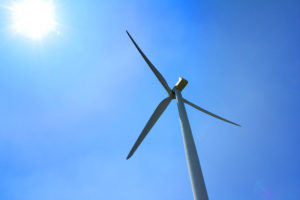
By Emma Gilham
As fire engulfs the West, tropical storms destroy communities, and temperatures reach unprecedented levels, climate change is on the public’s mind. The Green New Deal is something many of us have heard about from the news or from social media. Words like “expensive”, “socialist”, and “daydream” buzz around the idea. If someone was particularly interested, unbiased information on the topic is readily available. However, this takes a little more effort than turning on the television.
The Green New Deal is not a piece of legislation or even a proposal for one. It is a plan to address the climate crisis before it’s affects are irreversible. Based on the “October 2018 report entitled ‘Special Report on Global Warming of 1.5 oC’’ by the Intergovernmental Panel on Climate Change and the November 2018 Fourth National Climate Assessment report”, the Green New Deal considers the advice of experts in climatology. With this knowledge, comes harsh realities. The 14-page document sets the goal “to achieve net-zero greenhouse gas emissions through a fair and just transition for all communities and workers…” by 2050. It also acknowledges and prepares for the millions of jobs that will be lost in this process. The plan proposes reinvesting in clean energy and guaranteeing people jobs and healthcare. In contrast to the way BIPOC (Black, Indigenous, People of Color) communities have historically been left behind when the government makes new goals, the proposal takes on intersectionality. For example, “obtaining the free, prior, and informed consent of indigenous peoples for all decisions that affect indigenous peoples and their traditional territories…”. Although the atrocities inflicted upon native tribes by the government cannot be undone, there are ways that we can improve the existing relationships. The Green New Deal also addresses the gender pay gap as a crisis related to climate change: “a gender earnings gap that results in women earning approximately 80 percent as much as men, at the median…”. Climate change and pollution disproportionately effect “frontline and vulnerable communities” such as BIPOC communities, migrant communities, women, the poor, the elderly, and the disabled, and the Deal puts forth efforts to begin remedying this. I encourage you to read through the document. Ask yourself: Is this feasible? What are the benefits and drawbacks? How would this affect my life or my children’s lives? At this time, The Green New Deal has received a lot of criticisms and praises. While it doesn’t produce any legislation, it is the only document we have that has attempted to confront the issues we face. It paints a picture of a future to work towards. In the end, climate change is not going to wait for us to finish brainstorming, it’s time to act.